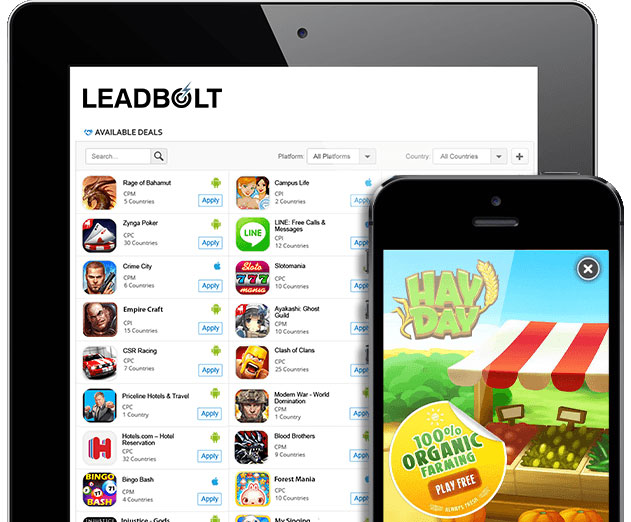Demystifying the Buying and Selling of Mobile Ads
Saturday, September 6, 2014

|
Dale Carr |
Whether you’re an app developer looking to monetize your app through advertising, or an advertiser interested in reaching a mobile audience, the business of buying and selling mobile ads may seem overwhelmingly complex, with many ad tech solutions and buy-sell platforms offering different ways of doing business.
Here’s a simple overview of the benefits of each type of method to help guide your selection process and help you choose the business partner that best matches your preference and goals.
Blind Networks
Definition: These companies offer good pricing to direct marketers in exchange for those marketers relinquishing control over where their ads will run, though some networks offer a "site opt out" method to ensure that your ads avoid landing on sites that do not convert for them or otherwise potentially unappealing to a brand. The network usually runs campaigns as Run-Of-Network
Pros: Lower pricing, combined with conversion optimization and ad targeting technology.
Con: Advertisers don’t have visibility into where your ad campaigns run.
Bottom line: Blind networks work well if your primary area of focus as an advertiser is on conversions/app installs, and you don’t mind letting the network decide where to place your ads.
Premium (aka Specialty ad networks)
Premium networks pride themselves on having well-known, big-name publishers within their network, to the exclusion of the smaller, independent publishers. Unlike the “blind” networks, premium networks often furnish a list of their network partner mobile sites and apps and they often offer advanced targeting capabilities.
Pros: Reputable publishers, transparency, and the ability for the advertiser to cherry-pick where their campaigns run.
Cons: Less affordable than blind networks, who oftentimes also have premium publishers included within their network, but don’t reveal the names.
Bottom line: If you’re a marketer with particular sensitivities about where your ads appear and/or a very specific target audience (e.g., an athletic shoe company targeting female runners), a premium network lets you decide where to run your ads for the most targeted reach and conducive environment for your brand.
Demand Side Platform (DSP)
Definition: A platform that gives advertisers RTB (real-time bidding) access to multiple sources of ad inventory.
Pros: Ability to tap into massive amount of ad inventory at a lower price.
Cons: Publishers tend to sell the inventory that would have gone unsold, which could be lower quality traffic.
Bottom line: If you’re looking to buy traffic efficiently with transparent pricing, look into a demand side platform.
App Developers should take special note of these unique platforms and methods:
Direct Deals
Definition: Direct Deals is on the rise for some obvious reasons. In concept, a direct deal marketplace connects app publishers with advertisers to match up partners that are the best fit, in some case avoiding the middleman.
Each marketplace runs a little differently. For example, one marketplace may connect both interested parties while leaving the deal negotiation in the hands of the partners to work out on their own; while in a different marketplace offering, all advertiser deal terms are displayed upfront for the publisher to accept or decline - for a clear, instant, no-haggle experience. Either way, publishers can think of it as your own ad server with offers already available without having to hunt for them.
Pros: Most are free for publishers to utilize; Instant access to a variety of new partners, more transparency to see who you are partnering with and their deal terms, and more controlled outcomes.
Cons: More autonomy could be great, but with that comes hands-on responsibility. If you’re busy or passive, you might prefer the managed aspects of an ad-network. (Although ad networks offer self-service as an option too.)
Bottom line: If you value discovery (ability to explore new partner opportunities to find the best), transparency (ability to view offer and partner details) and control (ability to start and pause campaigns instantly), then direct deals may be your best matched option.
Ad Mediation/Exchange networks
Definition: An alternative to partnering with one ad network, or managing several ad network relationships independently, mediation networks allow app developers to implement one SDK, tapping into multiple ad networks from a single access point – and mediating the experience.
Pros: Each ad network will have their unique strengths and expertise. Mediation allows publishers to benefit from the expertise of each mobile ad network, in tandem.
Cons: Mediation networks also tend to take a cut of your revenue.
Bottom line: If you’re a looking to streamline the management of multiple networks and have the best control over your inventory, a mediation network can help with this.
Read more: http://www.leadbolt.com/
This content is made possible by a guest author, or sponsor; it is not written by and does not necessarily reflect the views of App Developer Magazine's editorial staff.

Become a subscriber of App Developer Magazine for just $5.99 a month and take advantage of all these perks.
MEMBERS GET ACCESS TO
- - Exclusive content from leaders in the industry
- - Q&A articles from industry leaders
- - Tips and tricks from the most successful developers weekly
- - Monthly issues, including all 90+ back-issues since 2012
- - Event discounts and early-bird signups
- - Gain insight from top achievers in the app store
- - Learn what tools to use, what SDK's to use, and more
Subscribe here




_cptybzmh.jpg)








